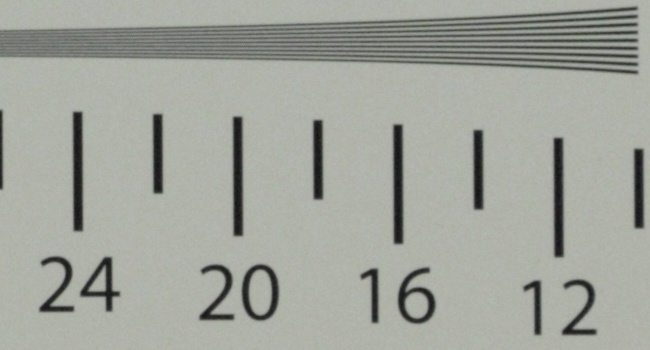Nikon Nikkor AF-S 200–500 mm f/5.6E ED VR
4. Image resolution
Let’s check how the tested lens compares here – its results in the frame centre at 200, 350 and 500 mm shows a graph below.
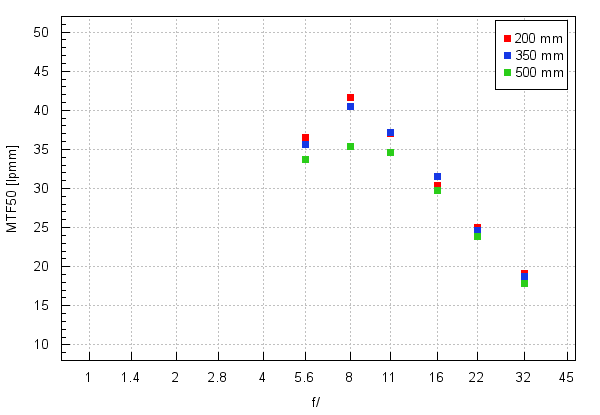
Please Support UsIf you enjoy our reviews and articles, and you want us to continue our work please, support our website by donating through PayPal. The funds are going to be used for paying our editorial team, renting servers, and equipping our testing studio; only that way we will be able to continue providing you interesting content for free. |
- - - - - - - - - - - - - - - - - - - - - - - - - - - - - - - - - - - - - - - - - - - - - - - -
It is clear that the beginning and the middle of the focal range are very similar. At the maximum relative aperture you get results on a very good level, reaching 36-37 lpmm, and on stopping down MTFs noticeably exceed 40 lpmm.
The maximum focal length lags behind distinctly but it doesn’t mean the performance of the lens is weak. Already at the maximum relative aperture you see values of almost 34 lpmm so well above the decency level and a slight stopping down makes the lens reach almost 36 lpmm.
Is it a good or bad result? Compared to high-end fixed-focal lenses such value doesn’t seem impressive. For example the Nikkor AF-S 500 mm f/5.6E PF ED VR, tested by us not so long ago, could achieve 42-43 lpmm. Still the Nikkor tested now should be rather compared to other zoom lenses, not to primes, and here it fares quite well. The Nikkor AF-S 80–400 mm f/4.5–5.6G ED VR at the maximum focal length had very similar results, about 36-37 lpmm. The Tamron SP 150–600 mm f/5–6.3 Di VC USD, in the 450–600 mm range fared, within the margin of error, the same. Even the so much praised Sigma S 150–600 mm f/5–6.3 DG OS HSM, physically big and heavy, is just slightly better than the Nikkor and its advantage sometimes doesn’t exceed the margin of error.
What’s happening on the edge of full frame detector? The graph below is going to answer that question.
The summary of this chapter can only be positive. In the frame centre, no matter what focal length you apply, you are able to reach images of very good quality, with the lens being completely useful up from f/5.6. There are no weak points when it comes to the edge of the smaller APS-C/DX sensor; they appear only at the maximum focal length and on the very demanding edge of full frame detector. Still it’s only to be expected: such problems are typical for the whole class of zoom lenses which focal length range ends about 400-600 mm.
At the end of this chapter traditionally we present crops taken from images of our resolution testing chart saved as JPEG files.
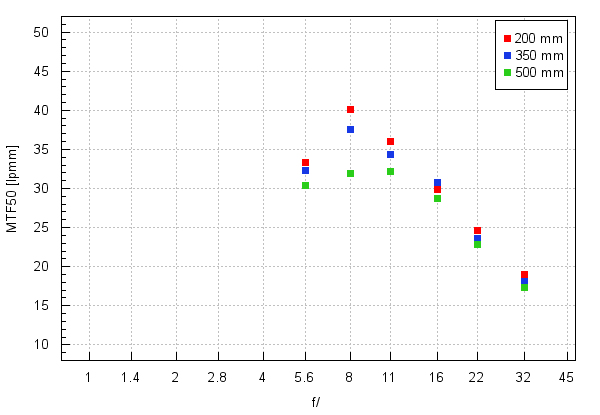
Once again shorter focal lengths are very much alike and the 500 mm sticks out a bit. The most important thing is the fact that the tested lens doesn’t have any weak points. Even at the maximum focal length and by f/5.6 the result is slightly above 30 lpmm so the lens provides useful images. It is an important message because this lens is going to cooperate with APS-C/DX sensors very often and it should be able to provide good image quality up to the very edge of the frame.
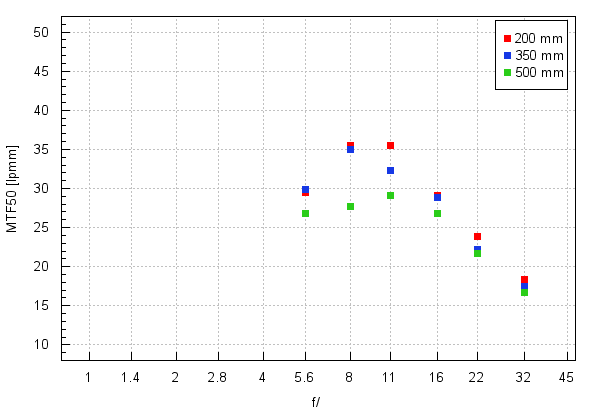
Once again the results in the 200-350 mm range are almost identical. In their case you don’t have to worry as you deal with a fully useful image already from the maximum relative aperture and on stopping down the aperture the MTFs are reaching over 35 lpmm. The 500 mm focal length is a different story. Here you might encounter serious problems with calling images useful; in order to approach that level you have to stop down the aperture to near f/11. Still none of zoom lenses perform brilliantly on the very demanding edge of full frame. The Nikkor 80–400 mm VR at 400 mm fared actually worse, the same can be said about the Tamron 150–600 mm. Even the Sigma S 150–600 mm had some serious problems and, e.g. at 300 mm performed noticeably worse than the lens tested here.
NikonáD3x, JPEG, 200ámm, f/8.0
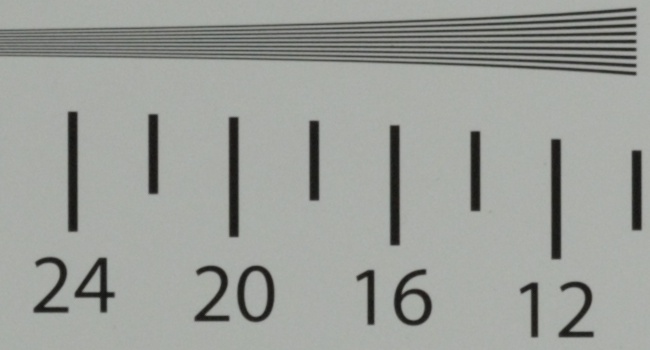
NikonáD3x, JPEG, 500ámm, f/5.6
